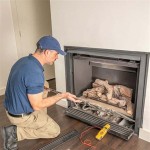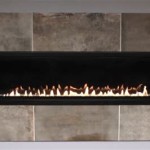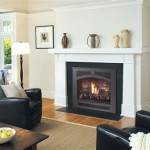DIY Ventless Gas Fireplace Insert: A Guide to Installation and Safety
Ventless gas fireplace inserts offer an attractive and efficient way to heat a room. They are relatively easy to install, requiring only a few basic tools and some basic plumbing knowledge. However, safety is of paramount importance when working with gas appliances, and it is crucial to understand the risks and regulations involved before attempting this project.
Ventless gas fireplace inserts operate by burning natural gas or propane, producing heat and a realistic flame effect. They are designed to be installed directly into an existing fireplace opening, eliminating the need for a traditional chimney or vent. These inserts are a convenient option for homeowners who desire the ambiance of a fireplace without the hassle of installing a chimney. However, it is important to note that ventless gas fireplace inserts can emit byproducts of combustion, including carbon monoxide, into the surrounding area. Therefore, proper ventilation and safety precautions are essential.
Understanding the Basics
Before embarking on a DIY ventless gas fireplace insert installation, it is crucial to understand the fundamental components and principles involved. The primary components include:
- Firebox: The heart of the insert, where the gas burns and generates heat.
- Log Set: Realistic-looking logs made from ceramic or refractory materials, adding to the aesthetic appeal.
- Burner System: The mechanism that controls the flow of gas and ignites the flame.
- Thermostat: Regulates the temperature of the insert.
- Gas Line: Connects the insert to the gas source, typically a natural gas line or a propane tank.
- Electronic Ignition: A system that ignites the gas burner, often triggered by a remote control or a switch.
Ventless gas fireplace inserts operate on the principle of combustion, where the gas is burned with air, producing heat and releasing byproducts. However, the absence of venting means that these byproducts, including carbon monoxide, remain within the room. This poses a significant safety risk, necessitating stringent safety measures and careful consideration of room size and ventilation.
Steps for Installation
Once you have acquired the necessary knowledge and tools, you can proceed with the installation process. The following steps provide a basic outline:
- Disconnecting the Gas Supply: Before starting any work on the gas line, it is imperative to turn off the main gas valve and ensure that the gas supply is completely disconnected.
- Preparing the Fireplace Opening: Measure the dimensions of the fireplace opening and ensure that the insert fits within those dimensions. Remove any existing fireplace equipment, such as the grate or the mantel shelf.
- Installing the Gas Line: Connect the gas line to the insert using a flexible gas line. Ensure that the line is properly secured and does not have any leaks. Consult your local building codes for specific requirements regarding gas line installation.
- Positioning the Insert: Carefully place the insert in the fireplace opening and ensure it is level. Use shims to adjust the height if necessary.
- Connecting the Electronic Ignition: Connect the electronic ignition system to the power source. Following the manufacturer's instructions is essential for this step.
- Testing for Leaks: Once the installation is complete, it is crucial to test for gas leaks using a soap solution. Apply the solution to all connections and look for bubbles, which indicate a leak. If any leaks are detected, immediately contact a qualified gas technician.
- Final Adjustments: Make any necessary adjustments to the position of the insert and ensure that it is correctly aligned and secure.
- Ventilation: Ensure adequate ventilation in the room where the insert is installed. Opening windows or using a fan can help to remove byproducts of combustion. Consult local building codes for specific ventilation requirements.
- Carbon Monoxide Detectors: Install a carbon monoxide detector near the fireplace insert to monitor the air quality and alert you to any dangerous levels of carbon monoxide.
- Proper Operation: Follow the manufacturer's instructions regarding the operation and maintenance of the insert. This includes regular cleaning and inspection. Never leave the insert unattended while it is in operation.
- Professional Installation: While DIY installation is possible, it is highly recommended to hire a qualified gas technician for professional installation. This ensures that the insert is correctly installed and meets safety standards.
Safety Considerations
Ventless gas fireplace inserts require strict safety precautions due to the potential for carbon monoxide accumulation. Here are some important considerations:
By understanding the fundamental components, following the installation steps carefully, and adhering to safety precautions, you can safely enjoy the warmth and ambiance of a ventless gas fireplace insert in your home.

Ventless Gas Fireplace Insert Installation Framing Wall For

Cozy And Stylish Diy Ventless Gas Log Fireplace

Diy Gas Fireplace

Ventless Gas Fireplace Insert Installation Framing Wall For

Terrific Gas Fireplace Insert Popular Country Design

Empire 29 Loft Small Vent Free Gas Fireplace 10 000 Btu Vflc10in32 Hvacdirect Com

Diy Fireplace And Mantel Build A Home

New Construction Framing For Ventless Gas Logs Lots Happening Around Me Week 7

A Ventless Gas Fireplace Doesn T Belong In Your Home Greenbuildingadvisor

Ventless Gas Fireplace Propane
Related Posts








